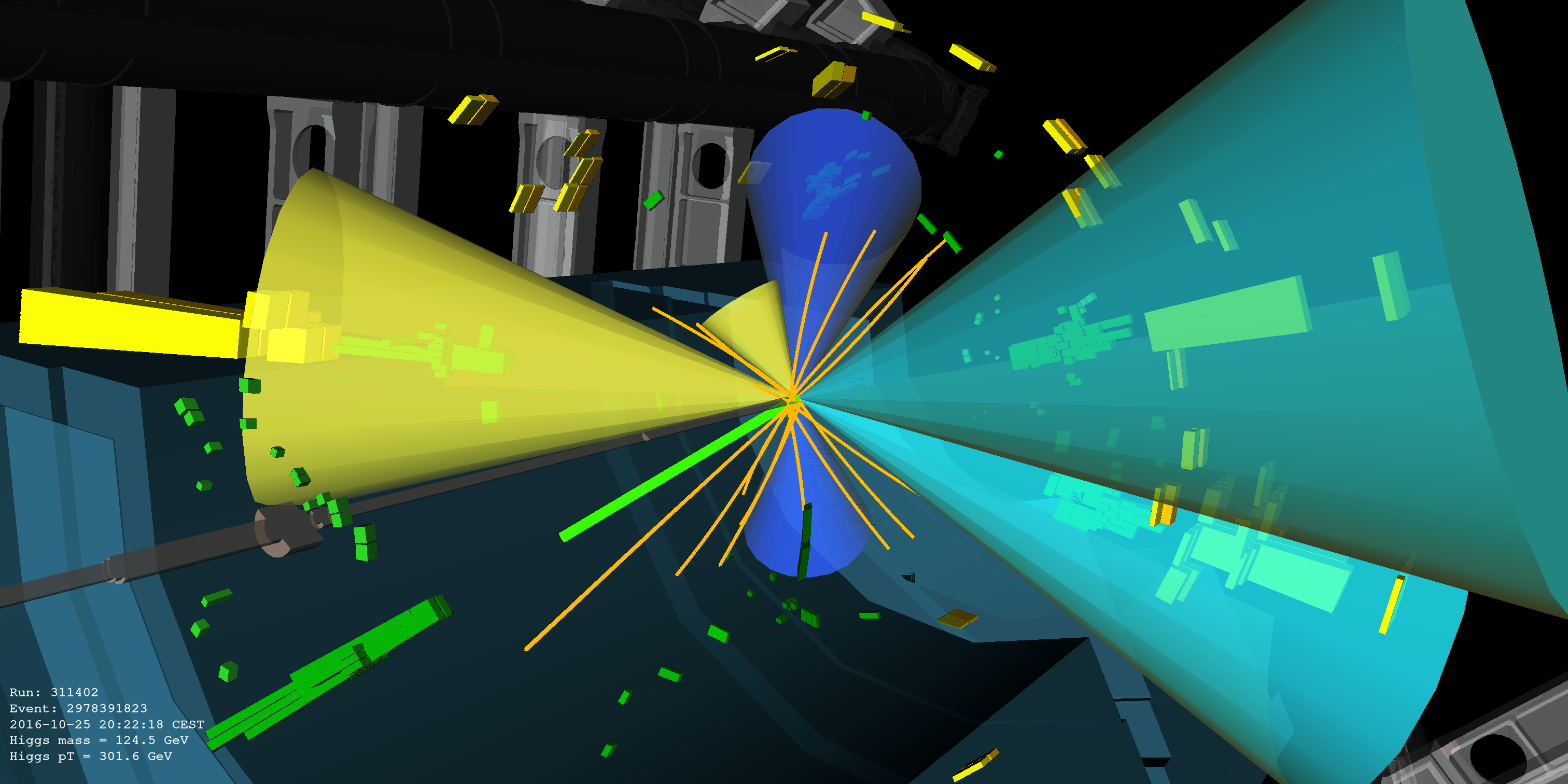ATLAS releases precise new measurement of Higgs boson production in association with top quarks
23 July 2024 | By
As the heaviest elementary particle in the Standard Model, the top quark is pivotal for understanding the origin of mass. The ATLAS Collaboration is studying the production of the Higgs boson together with a top-quark pair (“ttH production”). Although this process accounts for only about 1% of all Higgs bosons produced, it provides a unique opportunity for researchers to directly measure the interaction between the top quark and the Higgs boson, known as the “top Yukawa coupling.”
The ATLAS Collaboration has studied ttH production across various Higgs-boson decays, including its most common decay into bottom quark pairs (the “ttH(bb) process”). In 2022, researchers measured the ttH(bb) production rate using the full LHC Run 2 dataset collected in 2015–2018. The measured signal was lower than predicted, but still compatible with the Standard Model within uncertainties.
When performing ttH(bb) measurements, researchers face several challenges. One major issue is that other top-quark-pair-production processes produce signals similar to those of the ttH(bb) process, making them difficult to distinguish. Developing accurate theoretical descriptions of these background processes is also very difficult.
ATLAS physicists are continuously refining their analysis methods and boosting their experiment's precision. At the recent International Conference on High-Energy Physics (ICHEP) 2024, the ATLAS Collaboration presented a new measurement of the ttH(bb) process using the same Run 2 dataset, achieving a factor of two better expected ttH signal significance compared to the previous result.
Researchers used advanced machine-learning techniques to achieve the most precise individual measurement of ttH production.

Researchers incorporated refined reconstruction and calibration of physics objects, enhancing their ability to identify “jets” of particles originating from bottom quarks. Further, they worked with theorists to improve their description of top-quark background processes. This allowed them to expand their event selection criteria and analyse a factor of three more ttH(bb) events.
In addition, the ATLAS team used an advanced neural network to classify the selected collision events. This helped identify which jets likely originated from a Higgs-boson decay, enabling researchers to carry out additional measurements of the signal strength as a function of the Higgs boson transverse momentum. Signals could be organised into “simplified template cross sections” (STXS) regions. These categorise particle collisions according to properties associated with the production mode, allowing physicists to characterise the Higgs boson independently of its decay channel. The ttH(bb) process is particularly suited for probing events with the largest Higgs boson transverse momentum. These rare events can be sensitive to the signals of new physics beyond the Standard Model.
The results were found to be in good agreement with the Standard Model. The measured signal strength for ttH production is 0.81±0.21, compatible with the Standard Model prediction of 1, corresponding to an observed significance at the 4.6 standard-deviation level. This is just shy of the conventional 5 standard deviation requirement to claim an observation of ttH production in this decay channel. The figure shows a simplified view summarising all events in the analysis compared to the background prediction. It demonstrates an excess of data over the background prediction, compatible with events from ttH production.
This new measurement is the most precise individual measurement of ttH production – but it is only one piece of the puzzle! Ultimate precision will be reached when combining this result with the measurements of other Higgs boson final states.
Learn more
- Measurement of the associated production of a top-antitop-quark pair and a Higgs boson decaying into a bb pair in proton-proton collisions at 13 TeV using the ATLAS detector at the LHC (arXiv:2407.10904, see figures)
- ICHEP 2024 talk by Filip Nechansky: Measurements of Higgs boson production with top quarks with the ATLAS detector




